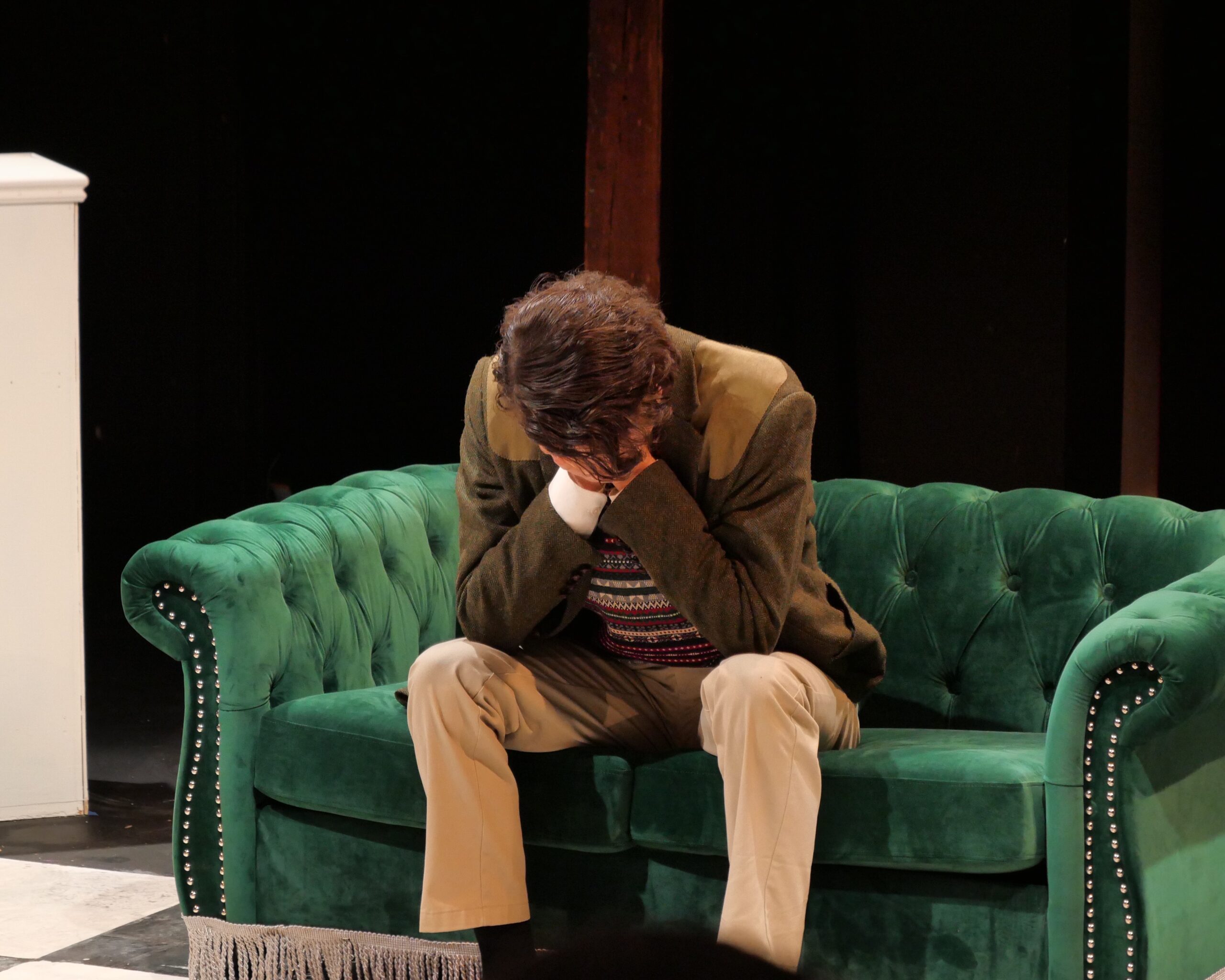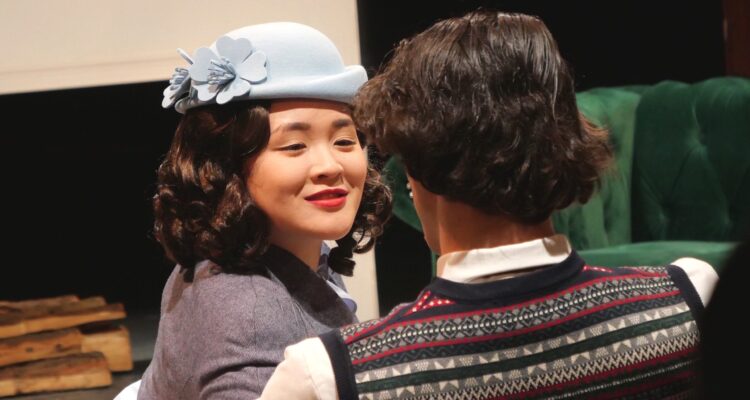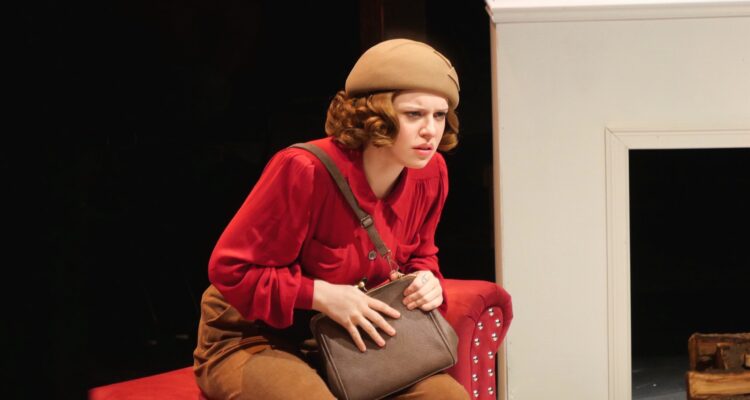The University of Maine’s production of Jean Paul Sartre’s “No Exit” was performed the weekend of April 5. While the show was set to premiere on April 4, its opening was delayed due to the snowstorm.
Sartre’s “No Exit” sees three recently deceased people now stuck together in Hell, which takes the form of a single sitting room. As they are forced to be near each other, they uncover why they are in Hell, watch those on Earth forget them, and slowly go mad due to the others’ presence.
The opening night performance also featured a Q&A session with the University of Maine Philosophy Club to discuss the nihilist, existential themes central to the play. The show is one act, lasting approximately an hour and a half and has its three leads on stage for their introduction onwards: Martin Guarnini as Joseph Garcin, Vincent Norman as Inez Serrano and Sarah Chang as Estelle.
Garcin is a journalist who was shot after running from a war. Inez was a sadistic lesbian who died in a murder-suicide with her lover. Estelle was a young wife who succumbed to pneumonia. The only other character is the valet, played by Nicholas Corcione. While the valet’s role is small, mostly there to lead each character to the room and set the scene, the most interesting part about the role was that Corcione walked around the rafters, leering down on the play from the top of the seating, slipping through the wing’s doors and appearing every so often. While small, this touch was interesting to notice throughout the play. Whenever your eye wanders, there would be the valet, watching over everything.
The philosophical nature of the show is the most interesting part, and enjoyment of the show depends on the audience’s interest in the questions it poses. The characters are over-the-top and generally dislikable, although this is by design.
Norman’s portrayal of Inez was loud and demanding. She climbed around on the couches, laughed loudly and often and was the most outgoing of the performance. While Norman’s energy was there, they at times seemed lost in the slower–paced portions of the play, stuttering into certain lines.
Garcin is the most vocally thoughtful of the characters and brings a clear line of philosophical thinking. Guarnini’s performance was appropriately done, being a mix of rambling and thoughtfulness. His delivery of the show’s dialogue was able to hold attention despite being philosophical.
Chang’s Estelle played well as the balance of the show despite the character being highly emotional. As Chang’s character is the most upset about being dead, and in Hell, she remains likable instead of annoying. Her flip-flopping emotional state was believable rather than off-putting.
The set consisted of three color-coded couches representing each character, a fireplace with a paper knife and a bronze bust and a plain white door. While small, the set did everything it needed to. The tightness of the stage helped add to the claustrophobic feeling.
The costuming of Garcin and Inez, done by Emily Voight, was done particularly well and set a clear feeling of time. Garcin’s green tweed suit, dress shirt, and sweater give him the feeling of a working but learned man. Inez had a pair of wide-legged tan pants and a starkly red blouse, loud and matching her personality.
“No Exit” contains one of Sartre’s most famous quotes: “Hell is other people.” The show is a slow boil of despair and loathing between the three characters. While the characters and the things they do are irritating and outrageous, the way they are portrayed by the three leads was done excellently. The show had enough energy to not drag through the run time but enough focus on the tamer moments to make everyone feel rounded.
The lighting of the show was also simple yet well done. The show was mostly lit by a bright overhead light, although stark spotlights of the characters’ primary color (green for Garcin, red for Inez, blue for Estelle) would take over during particular moments. There was also a moment in which the lights took on a ghostly flashing, which did well to amplify the scene without being over-the-top.
Overall, the production of “No Exit” was well done and well organized. The subject matter of the play may not be to everyone’s liking, and how long the play feels depends greatly on that.













